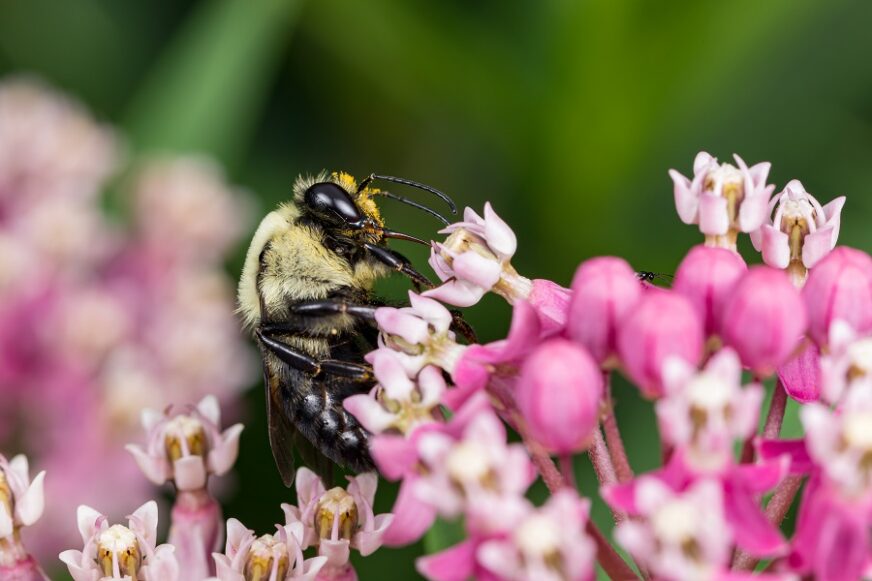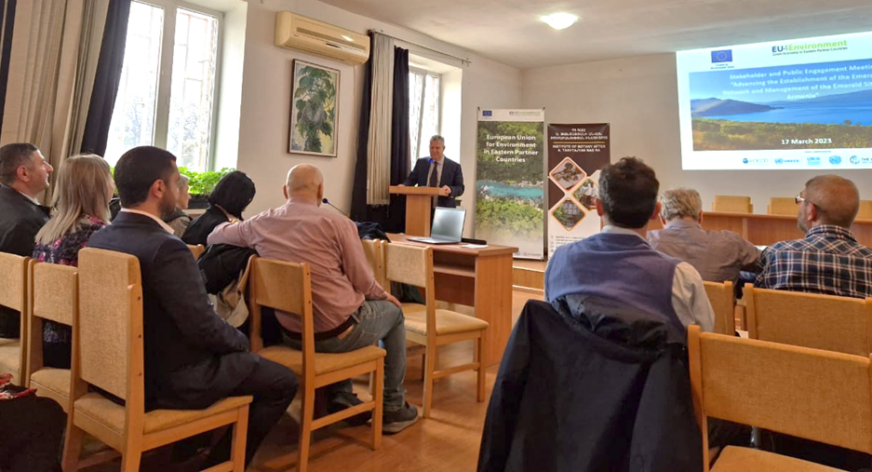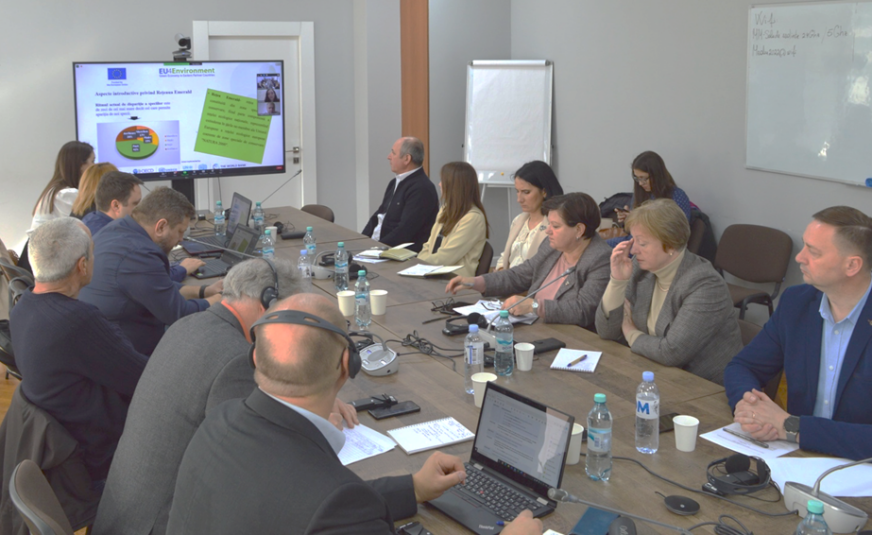
Healthy biodiversity and ecosystems are not just pretty landscapes and seascapes. They play a critical role in “subsidizing” our economies due to ecosystem services (for example, air or water purification) and helping us to mitigate the effects of climate change. In fact, they help absorb about one half of carbon dioxide emitted as a result of human activity. Apart from serving as a sink for greenhouse gases and reducing pollution, they also regulate the water cycle, maintain soil quality, provide food and timber, and more generally underpin human wellbeing, including our mental health. Yet pollution and unsustainable use of land and water resources have led to the global loss of biodiversity — declines in animal and plant species, ultimately threatening ecosystems and humanity.
This past October at the Conference of the Parties (COP-15) to the Convention on Biological Diversity, in Kunming, China, countries have committed to and defined a path to reversing the dramatic decline of biodiversity and ecosystem services worldwide. Just two months later, in December 2022 in Montreal, the governments further pledged to restore 30% of land and water by 2030. The European Union has worked to create space for an ambitious agreement. Now it is time for all countries to deliver on shared goals.
Recognizing the importance of preserving biodiversity while also addressing climate change, with support from the European Union and with the World Bank as an implementing partner, the Eastern Partnership (EaP) countries are working to address biodiversity loss and improve ecosystems. One element of this support is extending and better managing the Emerald Network, which together with EU’s Natura 2000, represents a system of areas of special conservation interest established at the pan-European level to ensure long-term survival of species and halt land and habitat degradation. More specifically, the EaP countries are aiming to expand the Emerald Network and achieve the targets of the Strategic Plan for the Bern Convention for the period to 2030. National action plans and roadmaps for the Emerald Network are being developed, along with the guidelines for and piloting of the implementation of effective Emerald site management. This is done within the regional EU4Environment programme.
This programme also helps the EaP countries enhance capacity to develop and implement robust management and monitoring systems. Such systems are critically important for long-term conservation and sustainable management of the Emerald Network’s protected areas in line with the shared goals of biodiversity preservation and climate action.
In Armenia, the EU4Environment Programme has made marked progress in developing recommendations for the National Action Plan, which will help establish and manage the Emerald Network sites through 2030, and Emerald site management plan guidelines. On March 17, 2023, the Ministry for Environment (the focal point of the Bern Convention), ArmForest (state non-commercial organization), the scientific community, and other national and international environmental groups and stakeholders gathered for the first stakeholder engagement meeting. They defined the needed steps for establishing and managing the Emerald Network sites and shared experiences in managing Natura 2000 sites in Greece, discussing how these could be adapted to the project’s needs. The participants jointly with the Ministry of Environment have agreed to establish a working group to ensure transparency and informed decision-making during the crucial phase when sites are identified for inclusion in the Emerald Network.

Photo caption: The first stakeholder engagement meeting in Armenia, March 17, 2023
In Azerbaijan, even though progress has been made in ensuring that 18% of the country’s area is designated as protected sites, a more comprehensive network of sites is being considered to expand beyond the current few large sites because about 80% of all species and habitats in Azerbaijan require further conservation efforts. With this aim, the World Bank under the EU4Environment Programme works with the government and stakeholders to identify new potential Emerald sites. The work started with developing a National Roadmap to facilitate the adoption of the candidate sites and recommendations for the implementation of the Strategic Plan for the Bern Convention to 2030 in Azerbaijan. The first working meeting held on May 11, 2023 recognized that the existing proposed network needs to be expanded and support is needed for the identification of additional potential sites. Moreover, engaging academia and establishing a strong collaboration between the EU4Environment Programme and the government will be crucial for effective data collection and verification.
In Georgia the EU4Environment Programme focuses on improving management of forest areas within the already established Emerald Network sites. Forest management guidelines, practices, and challenges previously experienced within the Natura 2000 sites are informing the development of the Guidelines for Managing Forest Habitats in Emerald Sites of Georgia, which will be used by forest management practitioners for the Emerald sites located outside the nationally designated protected areas.
The World Bank and partners have conducted an overview of Georgia’s Emerald Network focusing on the status of forest habitat management and associated challenges. The analysis has identified the need to align Georgia’s system of habitat classification with that of EU’s EUNIS. Outdated habitat classification is significantly hindering efforts in identifying and mapping forest habitats. Currently, forest management plans in Georgia do not include identification and mapping of Resolution No. 4 habitats or provide measures for their conservation. Natura 2000 experiences are helpful for developing the Emerald Network forest management guidelines. They can also be used to guide management of the sites that are outside the national protected areas system.
In Moldova, the EU4Environment Programme is helping to review the regulatory framework governing nature conservation and protection of species and habitats as well as the establishment, management, and protection of the Emerald Network. The programme also has supported the development of the first draft of the National Emerald RoadMap. This is a high-level strategic plan that defines the steps on how the Emerald Network can be implemented and monitored given the complexity of issues (legal, institutional, administrative, site management, stakeholder engagement etc.) and securing cross-sectoral involvement and public communication. The interim findings of the regulatory analysis and the draft National Emerald RoadMap were presented at the first stakeholder engagement meeting on April 28, 2023. The stakeholders provided important feedback on both documents and have advocated to include Emerald-related institutional needs in the government development planning.

Photo caption: The first stakeholder engagement meeting in Moldova, April 28, 2023
In Ukraine, apart from advancing the management of the Emerald sites and developing Emerald Network legislation, the national counterparts have also requested that the EU4Environment Programme examines the impacts of the Russian aggression and war on biodiversity and ecosystems. Ukraine is a home to 35% of Europe’s plant and animal species. Designing guidelines that will help identify the loss of biodiversity and ecosystem impacts in conservation areas affected by the Russian aggression, would help Ukrainian partners to mitigate the impacts on plant and animal species and ecosystems.
On this Biodiversity Day, let us be reminded that biodiversity and natural ecosystems matter. They are the cornerstone of the countries’ natural capital and sustainable development. Conserving and restoring natural capital can facilitate greener growth, while investing in protected areas can provide opportunities to strengthen livelihoods and communities on the local level and mitigate climate risks on the global level bringing the Kunming-Montreal agreements into action for stronger, greener, and more sustainable future across the EaP countries.





